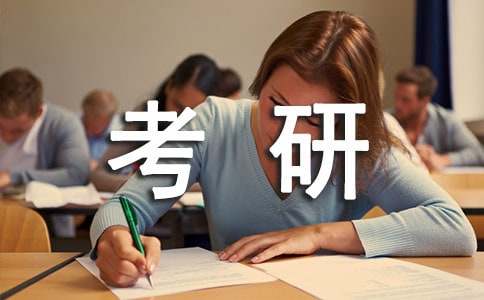- 相關推薦
考研一族英語閱讀模擬練習之一
閱讀模擬練習之一

Text 1
Each year, 1,400 high-school students from more than 40 countries are invited to compete in the prestigious Intel International Science and Engineering Fair (Intel ISEF), the world’s largest precollege science contest. The select group of young scientists is chosen from the several million students who compete in local and regional science fairs throughout the year. Participants compete for $3 million in scholarships and prizes, presenting projects in 15 categories like medicine, biochemistry, computer science and zoology. Earning top honors isn’t the only goal for contestants. Nineteen percent (or 274) of the finalists at the 2005 competition held last month have already begun the process to patent their projects.
Ammem Abdulrasool, a senior at the Illinois Junior Academy of Science, won top honors at this year’s Intel ISEF for his project, “Prototype for Autonomy: Pathway for the Blind.” He walked away with $70,000 in prize money and a free trip to October’s Nobel Prize ceremony. Abdulrasool developed technology that allows visually impaired individuals to navigate themselves from one location to another by using the Global Positioning System. Individuals wear a half-kilo Walkman-size device, a bracelet on each arm and a pair of earphones. After entering a starting and ending location into a personal digital assistant (PDA), they are guided with verbal commands that tell them when and in what direction to turn. Simultaneously, a bracelet vibrates signaling the correct direction. To test his device, Abdulrasool recruited 36 blind adults and asked them to visit five landmarks in his neighborhood. The navigational tool saved people an average of 26 minutes in travel time and reduced the number of errors (wrong turns and missed locations). “Looking at how hard it was for them to travel and how they were dependent on everyone else motivated me to do something,” he said. Abdulrasool hopes are applying for a patent and then plan to market the product commercially.
In the fair’s 56-year history, a number of projects have been implemented for commercial use. Michael Nyberg, a 2001 competitor, hoped to reduce the number of West Nile virus infections through acoustics. With a bucket of mosquito larvae and a sound generator, Nyberg discovered that a 24 kHz frequency resonated with the natural frequency of mosquitoes’ internal organs: larvae that absorbed the acoustic energy would explode. His sound-emitting device, Larvasonic, is now sold online (www.larvasonic.com). Tiffany Clark, a 1999 competitor, found evidence that bacteria produced the methane gas found inside coal seams in Wyoming’s Powder River Basin. This suggested that injecting nutrients into coal seams might provide an unlimited supply of natural gas. A Denver-based technology firm is now continuing Clark’s high-school research. And someday soon, blind people around the world may be wearing bracelets that issue GPS commands.
21. How are young people selected to participate in Intel ISEF?
[A] They are pre-university students.
[B] They must win science competitions in their home countries.
[C] They must patent or be about to patent an invention.
[D] They are chosen from young people who take part in science competitions.
22. Which of these is NOT mentioned as an advantage of Abdulrasool’s device?
[A] It enables blind people to get from A to B faster.
[B] It helps them avoid obstacles.
[C] It gives information to blind people in more than one way.
[D] It is extremely light.
23. How are Abdulrasool’s invention and those of Michael Nyberg and Tiffany Clark similar?
[A] Their inventions all have organic components.
[B] They all won the Intel ISEF competition, though in different years.
[C] They all have, or could have, profitable applications.
[D] None of them have patents yet.
24. How does Tiffany Clark’s idea work?
[A] She feeds underground bacteria and they produce natural gas.
[B] Bacteria eat coal and produce natural gas.
[C] Bacteria are injected with coal molecules and produce natural gas.
[D] Bacteria extract natural gas from coal and are then harvested.
25. Which of the following statements about the Intel ISEF competition is true?
[A] It began in the 1960’s.
[B] The biggest prize this year was $3 million.
[C] There are 15 prizes in a variety of categories.
[D] Many participants have patented ideas and inventions.
Text 2
Ten years ago, Pierre Omidyar, a software engineer working in California’s Silicon Valley, began thinking about how to use the internet for a trading system in which buyers and sellers could establish a genuine market price. Over a long holiday weekend he wrote the computer code. At first, a trickle of users arrived at his website—including his girlfriend, who traded PEZ candy dispensers. By the end of 1995, several thousand auctions had been completed and interest in eBay was growing. And it grew and grew. From this modest beginning, eBay has become a global giant, with around 150m registered users worldwide who are set to buy and sell goods worth more than $40 billion this year.
【考研一族英語閱讀模擬練習之一】相關文章:
考研英語作文模擬練習之道歉信12-05
2014年考研英語現階段閱讀怎么練習?05-02
考研英語閱讀A節命題規律及備考練習05-02
考研英語閱讀理解模擬題(歷史學)04-13
考研英語 放大閱讀 “悅”考研05-02
考研英語“放大”閱讀 “悅”考研05-02
考研英語:抓住考研英語閱讀主旨句05-02
小升初英語模擬練習題05-04
考研英語強化 放大閱讀 “悅”考研05-02
2015考研英語 放大閱讀 “悅”考研04-29